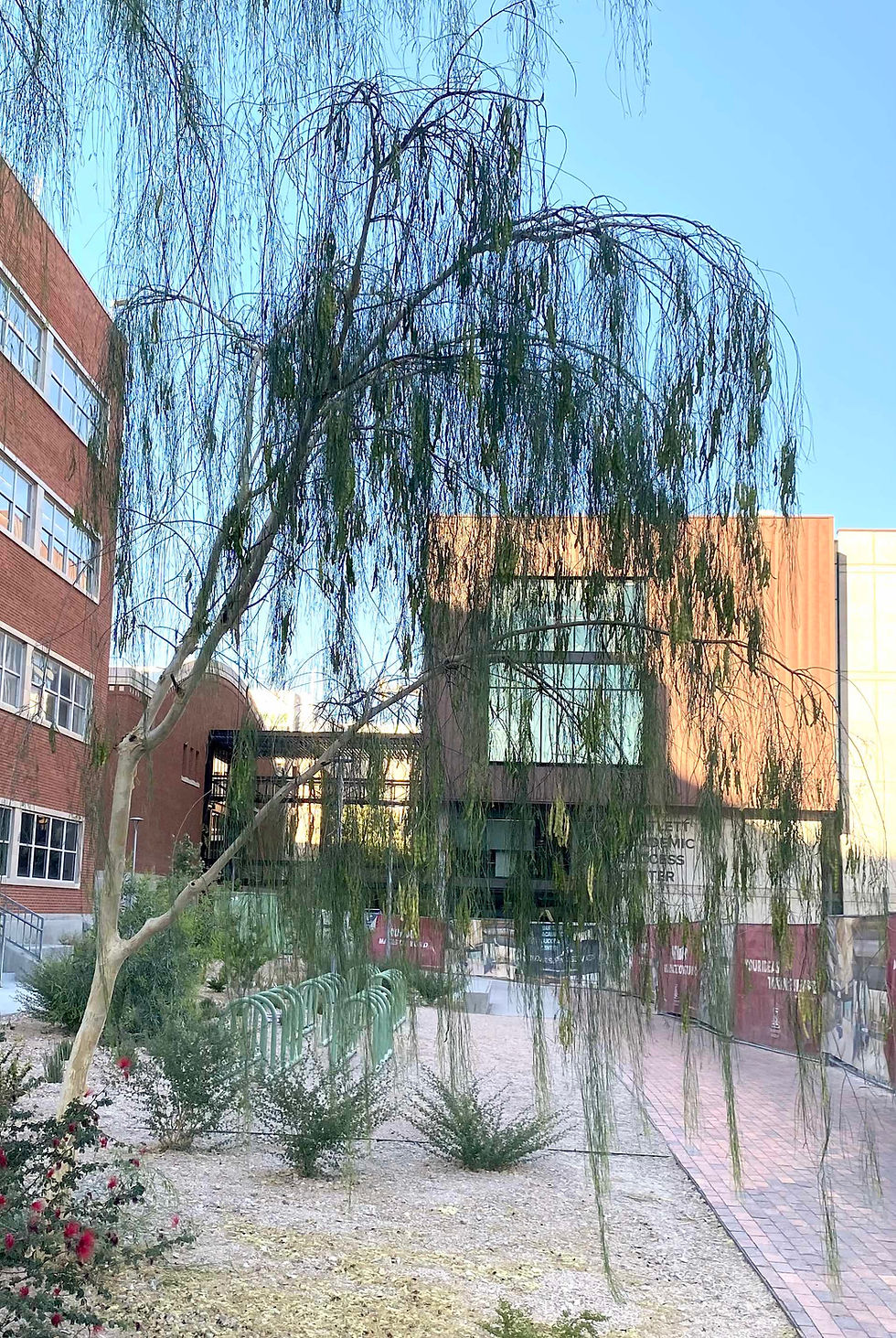Without a doubt, sacred datura is my favorite flower in the Sonoran Desert, actually, it was because of this plant that I decided to create my webpage to talk about it and other wonders. A very smart plant, despite the fact that it looks like a fragile herb, it can grow very large,

almost like a bush, it dies in the winter, but its root remains protected underground and then it is reborn in the spring. No irrigation is required, since it is adapted to survived with the rainy seasons, it has the power to spread its seeds all around it, and if you leave it, it can fill the entire patio! It is worth mentioning that in the Sonoran Desert we have another species of sacred datura besides Datura wrightii: Datura discolor, which has a smaller flower with a lilac color in the center of the flower and on the edges of the petals. Some botanists suspect that Datura wrightii could originally come from southern Mexico and Latin America with the Spanish conquerors and that it became naturalized in our region since those years, being the same as Datura inoxia, but there is still not enough technology to prove it¹.
Something that really catches my attention when sacred datura is mentioned is all that

mysticism and fear that surrounds it. We humans are full of stories, legends, beliefs, etc., and without realizing it we affect other species with all this. In Mexico we have a saying: “Beware! Don’t let them give you datura” indicating that you shouldn't ingest datura tea coming from “your suitor” because you will just lose it and fall in love with this person. I might have felt in this trap because I am in love of datura, but I need to be super clear and serious with all these sayings, all the daturas in the world are very poisonous. But to be realistic, there are a ton of poisonous plants that surround us even inside our homes, such as Monstera deliciosa and lilies, or outdoors like Nerium oleander, which contain high levels of toxicity and are so dangerous if eaten. Sacred datura is just one more plant on the list of poisonous plants in the world. So if you have this plant in your garden, just don't eat it, or smoke it, or don’t do other nonsense with it, all you have to do is grab a chair, sit back and start admiring it.
We have been so afraid of this plant for centuries, that we have completely eliminated it from our patios, parks, etc. This plant is super important for nocturnal pollinators, such as moths
and bats. It serves as food for some of the largest flying insects in the Sonoran Desert, the sphinx moths. In fact, the levels of poison that daturas contain, help the caterpillars that feed on their leaves to acquire an unpleasant taste and this protects them from predators . So as an extra benefit of having daturas in your garden, you get to be surprised by the number of animals that come to their flowers, I was amazed to find those large moths asleep inside the flowers. If you would like to grow this plant in your garden, look for a datura when you go for a hike in the wild, look for the fruit, which is a dry ball with many spikes that contains the seeds (I hope you bring gloves because otherwise it will hurt), take it home and then you open it very carefully and you will find many seeds, spread them in your garden and they will come out alone in the spring. Remember, sit tight and enjoy!

Type: Perennial herb, dies back every winter and comes back in the spring.
Size: Can reach a height of 3ft and 6ft wide.
Water use: They can survive with rainy seasons, no irrigation needed.
Flower season: From May until the beginning of winter.
Flowers: White trumpet shaped flowers, 5 inches long and 4 inches wide, smooth and sweet aroma. They open up at dawn and die the next day with the heat of the day.
Food for: Night time pollinators love datura, particularly the sphinx moths, which use the whole plant as a source of food for all the stages of their life. I have seen these moths sleeping inside the flowers. Bees also take advantage of these flowers very early in the morning before the flowers die.
Where to plant: Direct sun or in partial shade.
Distribution: It can be found everywhere in the Sonoran Desert. Sadly, it is considered an obnoxious weed in some places, and is pulled away, people tend to be scare of it because it is poisonous. In the wild, can be found on creeks and sandy soils.
Ancestral use: Endless ancestral uses of different indigenous groups throughout the American continent. It had a sacred power and was used as a psychoactive in smaller amounts. Consuming it in large quantities can be fatal and its best to said again: it should not be consumed by any human being or pet. There is a lot of information about this plant and its history, and we have to appreciate its beauty in a respectful way.
Landscape design: Can be use as an accent plant, combined with annuals that tolerates the cold season. Something good (or bad for some) is that if you let it, datura can take over your whole yard, the seeds spread so easily and you can have a patio full of white blooms and sphinx moths flying around at night. Its great to have datura in an entrance of a patio, or around a walkable path so people can appreciate their beauty and aroma!
Sources:
Books:
¹Baja California Plant Field Guide 3rd Edition, Norman C. Roberts and J. Rebman.
Native Plants for Southwestern Landscapes by Judy Mielke.
Web:
https://ucanr.edu/blogs/blogcore/postdetail.cfm?postnum=44337











